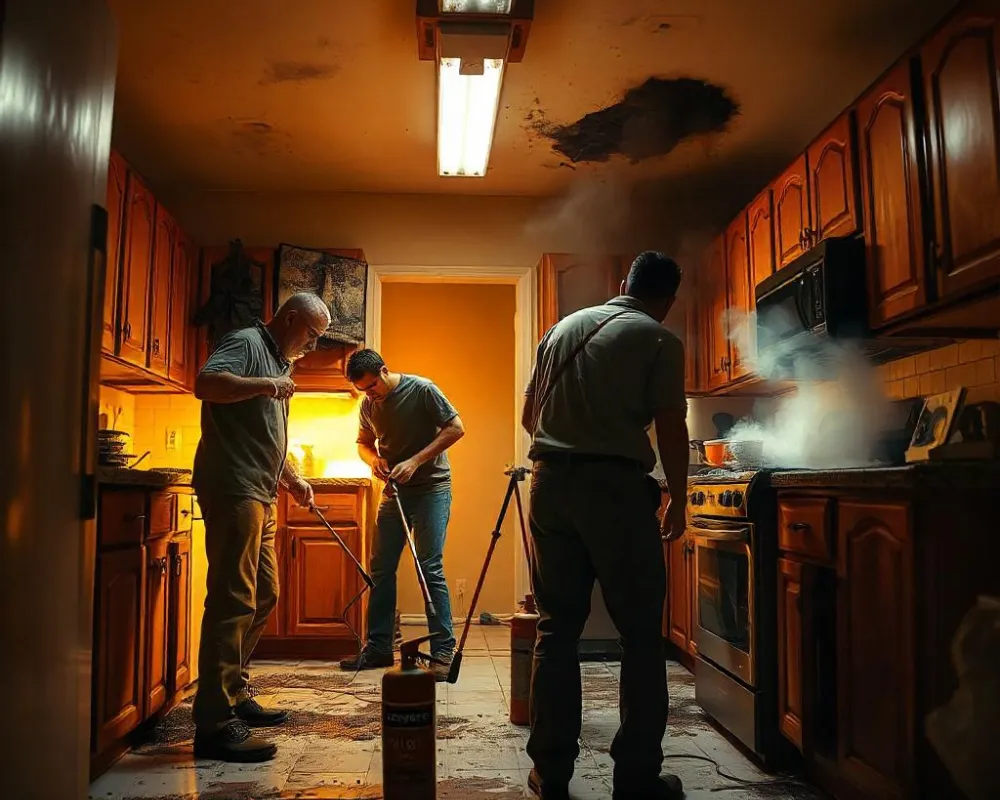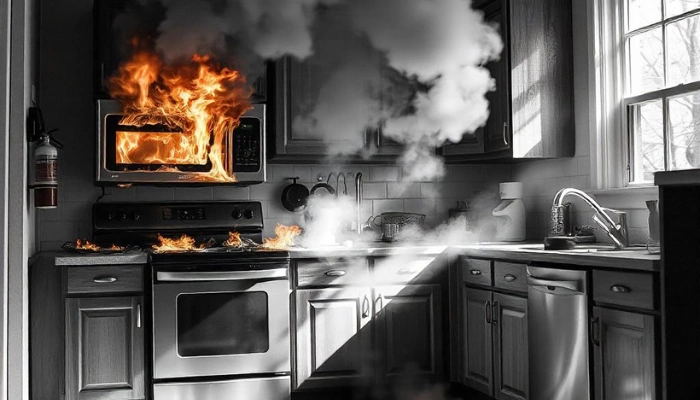How To Put Out a Fire Step by Step Guide
Fires spread fast, and waiting even a few seconds can make a huge difference. If you’re asking how to put out a fire, the answer depends on the type of fire and the resources you have nearby. You can stop some fires with water, baking soda, or a fire extinguisher, but others need special methods. Knowing the right approach keeps you safe and helps prevent bigger damage. This guide will walk you through different types of fires, the best way to put them out, and what to do if things go wrong. We’ll also explain when to step back and call professionals for fire damage restoration. Table of Contents The Science Behind Putting Out a Fire: The Fire Triangle To stop a fire, you have to understand what makes it burn. Fires need three things to exist: heat, fuel, and oxygen. These three elements form what is known as the Fire Triangle. If you take away just one side of the triangle, the fire will go out. There are three main ways to put a fire out: Cooling: This method removes the heat. Water is the most common agent for cooling a fire. It absorbs the heat and lowers the temperature of the burning material until it can no longer burn. Starving: This method removes the fuel. You can starve a fire by stopping the flow of a liquid or gas fuel. You can also remove solid fuel from the fire’s path, like spreading out burning logs in a fireplace. Smothering: This method removes the oxygen supply. By covering a fire, you prevent fresh air from reaching the flame. A fire blanket or a layer of dry powder can do this. How Many Types of Fire Are There? Fires are categorized into different classes based on their fuel source. Using the right type of extinguisher or suppression method is critical for safety. There are six main types of fires. You may also read: How to Clean Smoke Damage on Walls and Ceilings Safely. Class A Fires – Solids What is a Class A fire? A Class A fire involves common solid materials that burn. Think of things like wood, paper, fabric, and plastic. These are the most common kinds of fires you might see in a home or office. How do you put out a Class A fire? The best way to put out a Class A fire is by cooling it. With an Extinguisher: Use a water or foam fire extinguisher. The water cools the burning material and the foam can help to smother the flames. Without an Extinguisher: If the fire is very small, you can use a large bucket of water. Water will douse the flames and lower the temperature below its ignition point. Class B Fires – Liquids What is a Class B fire? A Class B fire involves flammable liquids. These include things like gasoline, oil, paint, alcohol, and other chemicals. You will often find these types of fires in garages, workshops, or storage areas. A key point here is that water will not work. How do you put out a Class B fire? You must smother the fire to cut off its oxygen supply. With an Extinguisher: Use a dry powder or carbon dioxide extinguisher. Dry powder fire extinguishers work by forming a barrier to separate the fuel from the oxygen. Carbon dioxide extinguishers replace the oxygen in the area with CO2, suffocating the fire. Without an Extinguisher: Never use water on a flammable liquid fire. The water will spread the burning liquid and make the problem much worse. You can try to pour a large quantity of baking soda or sand on the fire. These will help smother the flame by blocking the oxygen. A fire blanket can also be used to cover the fire. Class C Fires – Gases What is a Class C fire? A Class C fire involves flammable gases. These include gases like propane, methane, or butane. This type of fire is very dangerous because of the risk of an explosion. It is crucial to act quickly and carefully. How do you put out a Class C fire? The most important step is to starve the fire by stopping the gas flow. With an Extinguisher: A dry powder extinguisher is your best option here. It is safe for use on gas fires. Without an Extinguisher: The first thing to do is turn off the gas supply if it is safe to do so. This removes the fuel source. Then, use a dry powder or sand to put out the fire. Class D Fires – Metal What is a Class D fire? A Class D fire involves combustible metals. These are rare and usually only happen in industrial settings or labs. Examples include magnesium, titanium, and aluminum shavings. How do you put out a Class D fire? This type of fire requires a specialized method to put it out. With an Extinguisher: You must use a specialized Class D dry powder extinguisher. These work by cutting off the oxygen supply and cooling the metal. Without an Extinguisher: Never use water on a metal fire. Water can cause an explosion. You should not try to fight a Class D fire without the right equipment. Call for professional help immediately. Class F Fires – Cooking Oil What is a Class F fire? Class F fires, also known as wet chemical or chip-pan fires, are a very common cause of home fires. They involve cooking oil and grease in kitchen appliances. Fire with water on a cooking fire is incredibly dangerous. How do you put out a Class F fire? You must smother the fire and use an agent that reacts with the oil. With an Extinguisher: A wet chemical fire extinguisher is designed specifically for this type of fire. It creates a foamy layer that cools and seals the oil, preventing re-ignition. Without an Extinguisher: The best way to put out a fire in a pan is to smother the fire
How To Put Out a Fire Step by Step Guide Read More »




